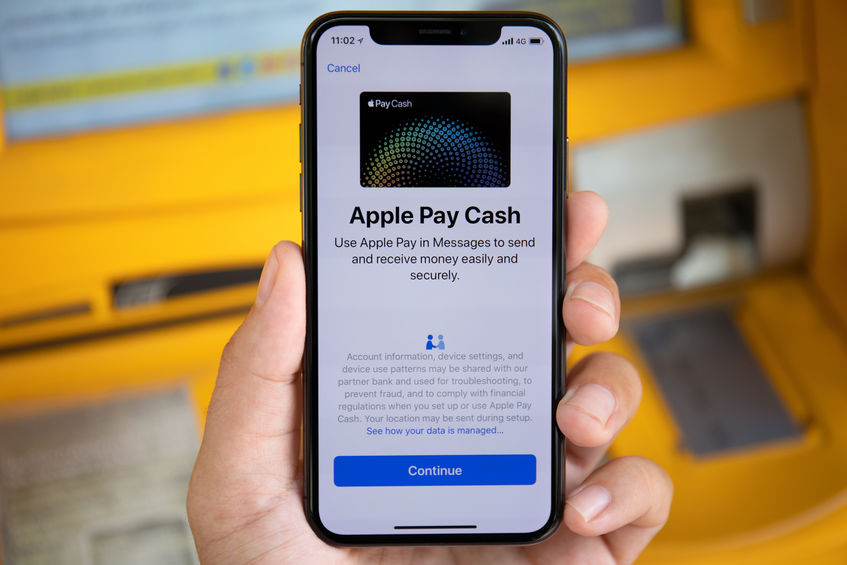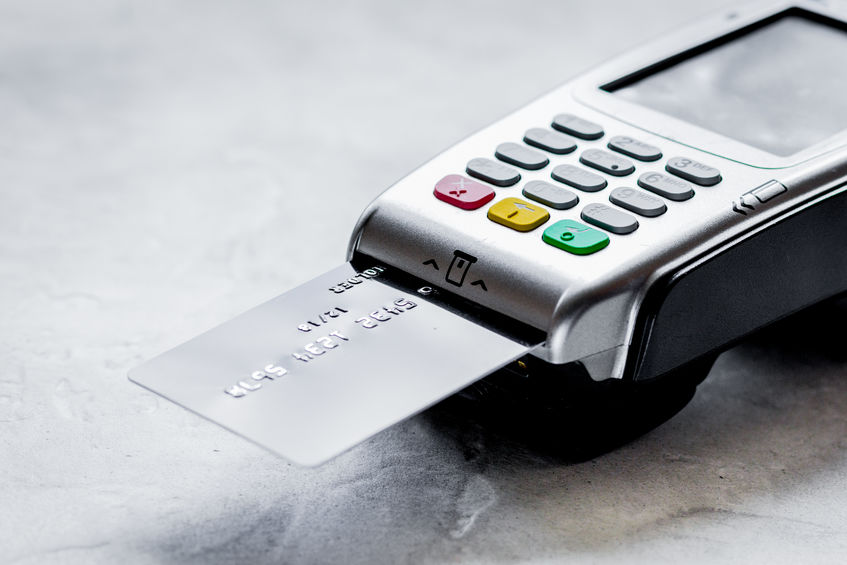Apple Pay Basics
How Apple’s Growing Payments App Can Help Your Business Today
We live in a world where convenience is king, and consumers expect as many payment options as possible. It’s also a world quickly trending towards a cashless economy in the wake of a global pandemic that has made contactless card payments the norm. Today, failing to offer customers contactless payment options in-store could be the difference between making a sale or not, and accepting consumers’ preferred payment options is even more important online where cart abandonment runs rampant and consumer loyalty is essentially nonexistent.
Apple Pay, Apple’s native payment application, is quickly becoming one of the favorite payment methods of the company’s legion of dedicated device and computer users. Its seamless integration with Apple hardware, the ability to digitize a user’s entire physical wallet and widespread acceptance make it the ultimate in convenience for Apple users. But Apple Pay is also highly secure and extends a level of fraud prevention and protection that benefits your business as much as it does the user.
But despite Apple Pay’s many benefits, it still remains a mystery to a large number of merchants. So, what exactly is Apple Pay, how does it change the payments landscape, and what does your business have to do to begin accepting it?
The Basics of Apple Pay
Apple Pay is Apple’s native digital payment solution that allows users to make payments both online and in-store right from their Apple devices. It’s designed to completely replace the need to pull out plastic cards by pulling those cards digitally into Apple Wallet, an app designed to securely store the details of all the user’s various payment methods. Apple Pay even integrates with some merchants’ loyalty programs, making it a one-stop solution for payment.
Apple Pay was initially released on the iPhone 6, and all current Apple Devices include Apple Pay functionality and Apple Wallet right out of the box. The system supports the vast majority of payment cards in the United States and around the world. Once a user has entered their cards, they can then scroll through Apple Wallet the same way they’d thumb through their physical wallet. But unlike a physical wallet, Apple Pay users never have to worry about losing a card. They can also quickly and securely make payments online while bypassing convoluted checkout processes.
Not all users are comfortable with storing their payment details on their mobile devices, but Apple Pay uses tokenization to ensure payment data is always completely secure. Once a card has been entered into the app and verified by the bank, the payment data transmitted over the web or to a contactless terminal never contains actual credit card numbers. That means even if a bad actor attempts to crack the user’s iPhone or to intercept a payment transmission, they’ll still never be able to access sensitive information. In essence, using Apple Pay is actually more secure than using standard physical cards.
Apple Pay for In-Store
Apple Pay makes cashless, contactless in-store payments are easier and more secure than ever by letting the customer’s iPhone or iWatch replace their debit or credit card. Apple Pay can be used not only in stores set up specifically to accept it but also anywhere contactless EMV payment terminals are available. In today’s digital world, that makes Apple Pay already extremely widely accepted, whether merchants know it or not.
In addition to being convenient, Apple Pay makes in-store contactless payments more secure. When a customer pulls out their iPhone to make a payment, all they have to do is put their thumb over the Touch ID or look into the Face ID and place the top of their phone near the payment terminal. It’s as convenient as tapping a debit or credit card, but the Touch ID and Face ID add a layer of security that no card can match. A lost debit card can be tapped with abandon until the account is locked, but Apple Pay requires the customer to quickly and easily verify their identity with each payment, minimizing the potential for fraudulent transactions.
Apply Pay for the Web
Apple Pay streamlines the online shopping experience to make it faster and easier for your customers. When shopping on an iPhone, iPad, or Mac, Apple Pay users can make purchases in Safari simply by clicking the on-site Apple Pay button and swiping their finger over their device’s Touch ID. Apple Pay takes care of the rest. No logging-in, no entering payment information – just fast, frictionless online payment.
What that means for websites accepting Apple Pay is that the checkout process is more streamlined than ever, and less friction at checkout means fewer abandoned carts. While you might lose some data collection opportunities from customers who don’t log in, the improvement in conversion rates makes Apple Pay an eCommerce merchant’s dream.
Apply Pay for Apps
Mobile-based shopping is exploding in popularity, and over a quarter of all online transactions are now made on a smartphone or tablet. While many shoppers make their purchases through mobile browsers like Safari, more and more eCommerce retailers are offering standalone apps as well. Much like in-store and on the web, with Apple Pay, in-app purchases require nothing more than a click of the Apple Pay button and a quick thumb swipe or face ID. That makes Apple Pay an ideal payment option for everything from in-game upgrades, to website and media subscriptions, to app-based eCommerce purchases and beyond. Not only does it offer a smooth, secure, checkout experience, it also eliminates the need to constantly re-enter payment details – an enormous pain on small mobile devices.
Getting Your Business Setup with Apple Pay
It’s clear that regardless of where you sell, you need to be offering Apple Pay to your customers. Luckily, getting set up to accept Apple Pay is extremely easy – and, for B&M merchants, might not even be necessary, since Apple Pay already enables payments on any standard contactless EMV terminal. If you can’t already accept Apple Pay in-store, adopting it is as simple as contacting your merchant services provider and getting set up with contactless payment hardware.
For online merchants, offering Apple Pay is as simple as enabling it in your store’s payment gateway or checkout dashboard, potentially in as little as a few clicks. All the major payment gateways and eCommerce platforms support Apple Pay, from Authorize.Net to PayPal, to Magneto, to WooCommerce, BigCommerce, and beyond. There are some guidelines online merchants have to follow, including Apple’s acceptable use terms, but PCI compliant web stores in good standing with their processors and the credit card companies will have no problem with Apple Pay.
From a transaction standpoint, Apple Pay effectively behaves like any normal card transaction. There are no additional fees charged by Apple, and things like refunds and chargebacks are handled exactly as if the user had simply used their card. In essence, Apple Pay acts as a transparent passthrough; there purely to make the payment process easier.
Apple Pay represents the ultimate in convenience and is just one of a new generation of payment tools offered by all the major players in mobile technology, alongside Google Pay and Samsung Pay. For more information on how BAMS can help your business get set up to begin accepting Apple Pay, contact us today.




